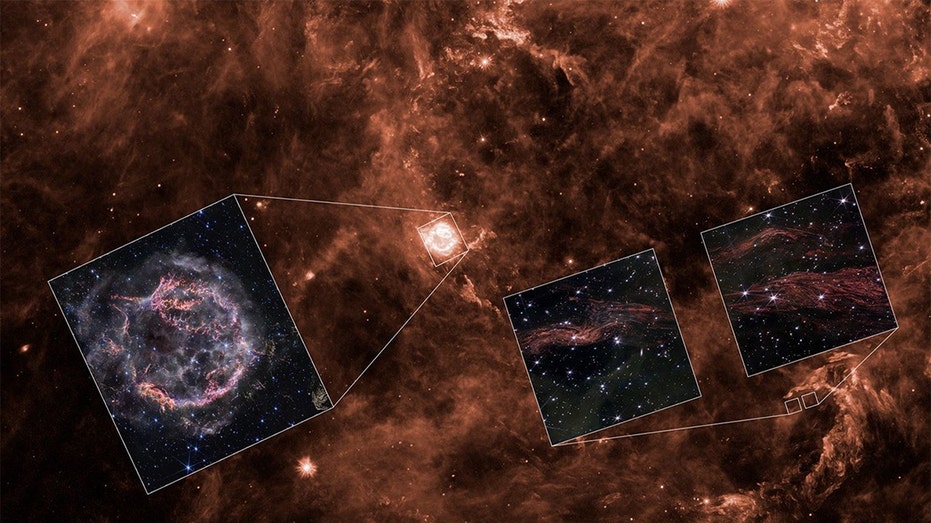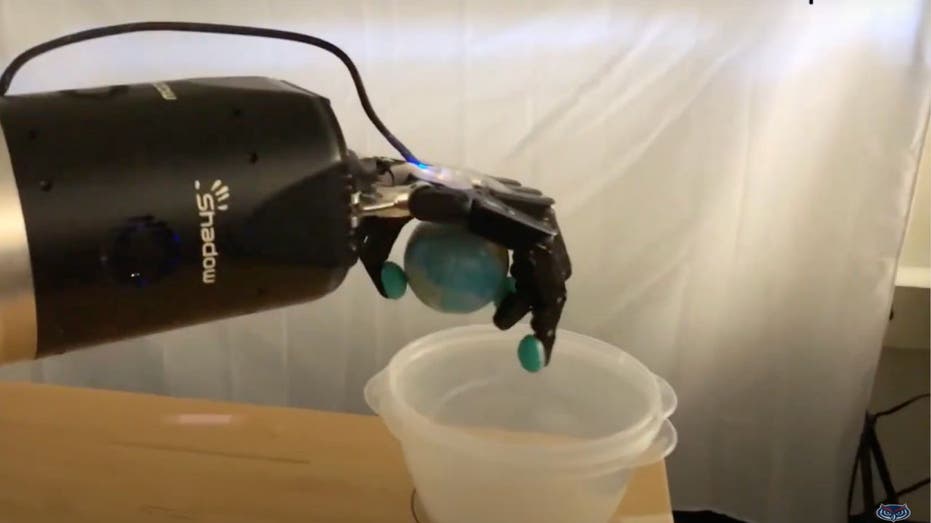- by foxnews
- 17 Jan 2025
Powerful Webb Telescope captures photos of one of the earliest supernova ever seen
The James Webb Space Telescope captured photos of one of the earliest supernovas ever seen using infrared technology, and creating a time lapse of the phenomena.
- by foxnews
- 17 Jan 2025
- in technology

"Once upon a time, the core of a massive star collapsed, creating a shockwave that blasted outward, ripping the star apart as it went," NASA said on its website. "When the shockwave reached the star's surface, it punched through, generating a brief, intense pulse of X-rays and ultraviolet light that traveled outward into the surrounding space."
Now, nearly 350 years later, scientists are getting a view of the aftermath as the pulse of light reaches interstellar material and causes it to glow.
The infrared glow created was captured by JWST, revealing details that look like knots and whorls found in wood grain.
While beautiful in nature, the observations also give astronomers the ability to map the 3-dimensional structure of the interstellar dust and gas for the first time.
"We were pretty shocked to see this level of detail," Jacob Jencson of Caltech/IPAC in Pasadena, the principal investigator of the science program, said.
Josh Peek of the Space Telescope Science Institute in Baltimore is also a member of the team and said they see layers like those of an onion.
"We think every dense, dusty region that we see, and most of the ones we don't see, look like this on the inside," he said. "We just have never been able to look inside them before."
The images produced from the JWST near-infrared camera (NIRCam) highlight a phenomenon called light echo, NASA said, which is created when a star explodes or erupts before flashing light into surrounding masses of dust and causing them to shine.
The visible light echoes are caused when the light reflects off interstellar material, where those at infrared wavelengths are caused when the dust is warmed by energetic radiation, causing it to glow.
The Webb images show tightly packed sheets, with filaments displaying structures on what NASA called "remarkably small scales," of about 400 astronomical units, or less than one-hundredth of a light year. One astronomical unit is the average distance between the Earth and the Sun, and Neptune's orbit is 60 astronomical units in diameter.
"We did not know that the interstellar medium had structures on that small of a scale, let alone that it was sheet-like," Peek said.
The discovery was compared by scientists to a medical CT scan.
"We have three slices taken at three different times, which will allow us to study the true 3D structure. It will completely change the way we study the interstellar medium," Armin Rest of the Space Telescope Science Institute, and member of the team, said.
The team's findings will be presented this week at the 245th American Astronomical Society meeting in Washington, D.C.
The Webb Telescope, the successor to the Hubble and the largest telescope ever launched into space, is a joint project of NASA and the European Space Agency.
- by foxnews
- descember 09, 2016
Flight passengers debate clapping upon touchdown: Major airline pilots react
Applauding the pilot when your flight lands might be more controversial than you think. Some experts call the act of gratitude "rude," and others call it a "guilty pleasure."
read more




